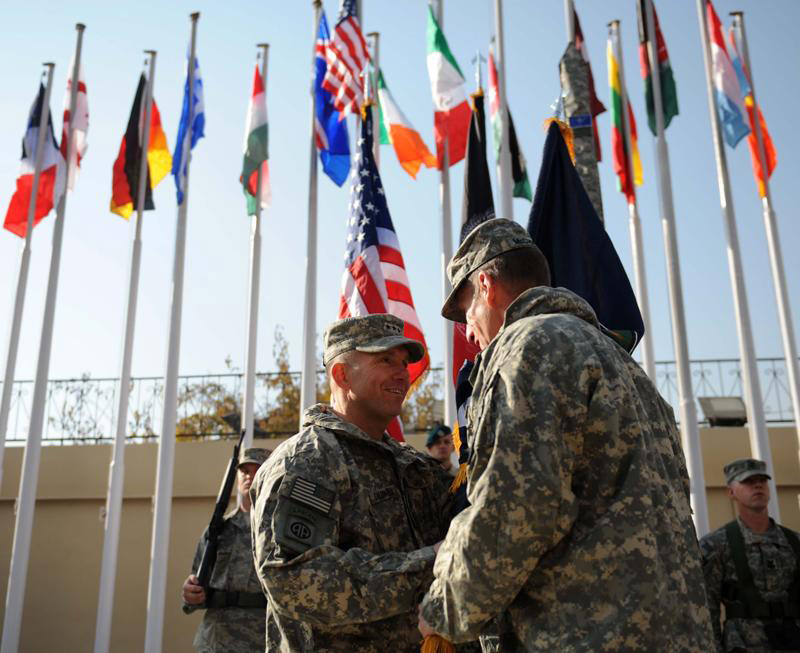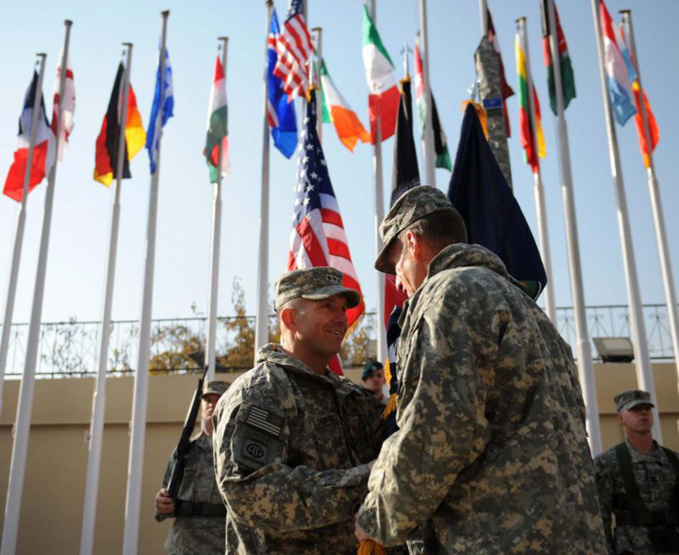At the same time, this issue is by no means the most difficult, given the objectives of the new NATO initiative, known as the "Four 30s". It provides that by 2020 the alliance must have 30 mechanized battalions, 30 air squadrons and 30 warships that could be brought to full combat readiness within 30 days or faster.
Bureaucratic barriers and narrow path of NATO
The project has been developed and prepared by Washington and agreed at a meeting of defense ministers of NATO countries in early June. In a modern, increasingly unpredictable world, high combat readiness is becoming an important task for NATO, Jens Stoltenberg said then. At the same time, he stressed that "it is not about creating or deploying new forces, but about increasing readiness of existing forces." The alliance's secretary general also expressed confidence that NATO members will be able to implement a new initiative in this period.
Yet, not everyone is as optimistic as Stoltenberg. Deployment of 30 battalions, the number of which varies depending on the country, particularly means that over 15,000 troops must be quickly deployed to the conflict zone. However, there is no corresponding transport infrastructure for this for now: the military may not be in time to reach its destination due to bureaucratic barriers within Europe, narrow roads and weak bridges.
An expert of the British non-governmental research center European Leadership Network (ELN), Alice Billon-Galland, is very skeptical. "Even without considering how difficult it would be to move troops across Europe, the question arises, what exactly do they want to move in. It does not make sense to build a bridge that can withstand the weight of the tank if you do not have tanks that could do it," - the expert notes. To date, most armies are not in a position to ensure effective implementation of collective defense, explains Billon-Galland.
30 battalions in 30 days. An impossible task?
In an article on whether British, French and German troops are capable of forming and maintaining armored brigades in the Baltic countries, a political scientist from the American non-governmental research center RAND Michael Shurkin outlined main weaknesses of the alliance that could completely bring the new initiative to nothing.
While a brigade usually includes three to six battalions, the NATO plan assumes to bring 5 to 10 brigades in a state of combat readiness within a month. In the opinion of Shurkin, none of the above-mentioned countries will be able to provide such a number of servicemen in such a short time.
At the same time, the UK is best prepared. In all likelihood, London would be in a position to provide a fully staffed brigade for a period of 30 to 90 days and constantly maintain its combat readiness. In turn, possibilities of France are extremely limited. Although Paris could perhaps have formed one brigade in a few weeks, this would require very great efforts from the French authorities. "The soldiers may not be ready to fight with Russia," the expert notes.
As for Germany, then, according to Shurkin, Berlin could provide only two modernly equipped battalions capable of opposing Russia. Although they could be brought into combat readiness within a week, equipment would have to be partially borrowed from other units, thereby limiting their ability to conduct other operations simultaneously.
source: dw.de
Bureaucratic barriers and narrow path of NATO
The project has been developed and prepared by Washington and agreed at a meeting of defense ministers of NATO countries in early June. In a modern, increasingly unpredictable world, high combat readiness is becoming an important task for NATO, Jens Stoltenberg said then. At the same time, he stressed that "it is not about creating or deploying new forces, but about increasing readiness of existing forces." The alliance's secretary general also expressed confidence that NATO members will be able to implement a new initiative in this period.
Yet, not everyone is as optimistic as Stoltenberg. Deployment of 30 battalions, the number of which varies depending on the country, particularly means that over 15,000 troops must be quickly deployed to the conflict zone. However, there is no corresponding transport infrastructure for this for now: the military may not be in time to reach its destination due to bureaucratic barriers within Europe, narrow roads and weak bridges.
An expert of the British non-governmental research center European Leadership Network (ELN), Alice Billon-Galland, is very skeptical. "Even without considering how difficult it would be to move troops across Europe, the question arises, what exactly do they want to move in. It does not make sense to build a bridge that can withstand the weight of the tank if you do not have tanks that could do it," - the expert notes. To date, most armies are not in a position to ensure effective implementation of collective defense, explains Billon-Galland.
30 battalions in 30 days. An impossible task?
In an article on whether British, French and German troops are capable of forming and maintaining armored brigades in the Baltic countries, a political scientist from the American non-governmental research center RAND Michael Shurkin outlined main weaknesses of the alliance that could completely bring the new initiative to nothing.
While a brigade usually includes three to six battalions, the NATO plan assumes to bring 5 to 10 brigades in a state of combat readiness within a month. In the opinion of Shurkin, none of the above-mentioned countries will be able to provide such a number of servicemen in such a short time.
At the same time, the UK is best prepared. In all likelihood, London would be in a position to provide a fully staffed brigade for a period of 30 to 90 days and constantly maintain its combat readiness. In turn, possibilities of France are extremely limited. Although Paris could perhaps have formed one brigade in a few weeks, this would require very great efforts from the French authorities. "The soldiers may not be ready to fight with Russia," the expert notes.
As for Germany, then, according to Shurkin, Berlin could provide only two modernly equipped battalions capable of opposing Russia. Although they could be brought into combat readiness within a week, equipment would have to be partially borrowed from other units, thereby limiting their ability to conduct other operations simultaneously.
source: dw.de



















